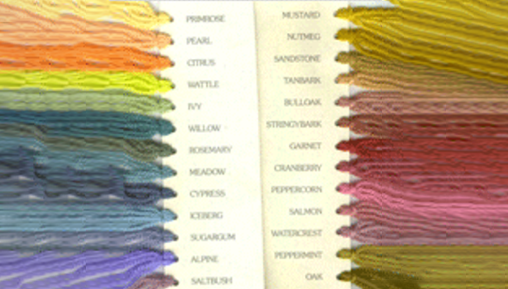

"A step towardsa beautiful world,
Hwa Shin Special Textile Filter will come together."

PP, PET, NYLON and other special materials such as Aramid, PPS and Glass are woven into fibers and used as industrial materials.
* Each filter bag can be made up to customer’s requirement.The aim of flame-retardant processing is to prevent the material from burning when it is close to fire sparks or is being burnt, or to prevent a small spark from spreading. It does not make the material completely inflammable, like glass fiber or asbestos. Flame-proof processing applies flame-proof treatment to the fiber to make it difficult to burn, and its processing methods include mixing flame-proof processing in the material stage, such as in the monomer or spinning solution, or making the fiber first and then finishing the process by applying flame-proof processing.

Shrink-proof finish
A process that prevents a fabric from shrinking due to washing or other reasons. Yarns or fabrics can be extended in the process of their manufacture, such as during spinning, weaving, refining, bleaching, or processing, so the fiber that creates the end fabric has a big potential for undergoing internal changes. Therefore, the fabric can shrink due to the ease of internal changes in it when it is damp or heated. Shrinkage lowers product performance, so this process prevents shrinkage.
Water-repellent finish
Water-repellent processing adds water-repellent agents such as silicon resin to fiber, which block water, causing the water drops to fall off, unable to enter the fiber, but which allow air to pass through. In addition, fluoric processing agents that have oil creation effects are also used, which make it easy to wipe off food from clothing if it gets on the latter. Recently, a new method of water-repellent processing was also developed, which has good waterproof performance as well as ventilation and moisture permeability. This method is often used for sportswear requiring good waterproof performance. This method coats a fabric with a porous polyurethane resin and laminates it, and the fabric maintains good ventilation through its many holes that are smaller than raindrops.

Inspection of raw fabric ⇨ linking ⇨ singeing ⇨ desizing ⇨ scouring ⇨ bleaching ⇨ dyeing
1. Inspection : The fabric is inspected as flaws in weaving can lead to flaws in dyeing.
2. Linking : The textiles are connected to one another with a sewing machine so that the dyeing process can be made consecutive.
3. Singeing : As the extra pieces of yarn on the surface of a textile can affect the dyeing process, these parts are burned with gas or electric heat.
4. Desizing : The adhesive stuck on a warp is washed off.
5. Scouring : Alkali liquid is used to get rid of oil or dirt.
6. Bleaching : Bleach is used to disintegrate color and dirt, and to make the fabric white.
7. Dyeing : Classified into dip dyeing or printing
- Dip dyeing : Material dyeing, yarn dyeing, piece dyeing, etc.
Functional Performance
- Performance related to dryness or moisture-proof performance (waterproof property, water-repellent property, absorption, dryness, moisture permeability, etc.)
- Performance related to sunlight (light resistance, UV ray protection, etc.)
- Performance related to warmth and heating (warmth, wind repellent, heat-proof property, etc.)
- Performance related to flame-retardant and heat-proof performanc.
Sensual performance
- comfort - Performance related to comfort fit when worn (flexibility, ease of wearing, draping, etc.)
- Performance related to size and form stability (W&W, wrinkle maintenance, pleat maintenance, etc.)
- Performance related to scent and smell (scent resistance, deodorization, etc.)

The following basic terms need to be understood first in relation to antistatic finish.
Static electricity refers to the build up of electric charge on the surface of objects. The static charge remain on an object until they either bleed off to ground or are quickly neutralized by a discharge. Static electricity can be contrasted with current (or dynamic) electricity, which can be delivered through wires as a power source. Although charge exchange can happen whenever any two surfaces come into contact and separate, a static charge only remains when at least one of the surfaces has a high resistance to electrical flow (an electrical insulator).
Electrical resistivity (also known as resistivity, specific electrical resistance, or volume resistivity) is a measure of how strongly a material opposes the flow of electric current. A low resistivity indicates a material that readily allows the movement of electric charge.
Electrical conductivity or specific conductance is the reciprocal quantity, and measures a material's ability to conduct an electric current.
An antistatic agent is a compound used for treatment of materials or their surfaces in order to reduce or eliminate buildup of static electricity generally caused by the triboelectric effect. Its role is to make the surface or the material itself slightly conductive, either by being conductive itself, or by absorbing moisture from the air, so some humectants can be used. The molecules of an antistatic agent often have both hydrophilic and hydrophobic areas, similar to those of a surfactant; the hydrophobic side interacts with the surface of the material, while the hydrophilic side interacts with the air moisture and binds the water molecules.
An antistatic yarn can be weaved together with other yarns to give antistatic effect on fabric. This yarn is made of carbon fiber or stainless steel. Thus, this yarn is used for clothing, filter media, and etc.
Processing method
The methods of preventing the creation of static electricity on materials can largely be divided into permanent static-electricity prevention methods and temporary static-electricity prevention methods, the latter involving the lowering of the friction coefficient of the material’s surface.
Static-electricity prevention agents are used for different textile processes, such as spinning, weaving, and finishing.
For spinning, static-electricity prevention substances are mixed when spinning the synthetic materials.
The most common example is mixing metal fibers. The end result is much softer than that of the finishing process (e.g., coating with carbon), and the static-electricity prevention effects can be permanent.